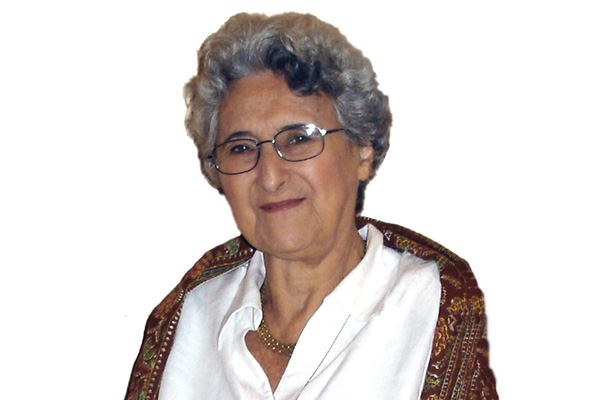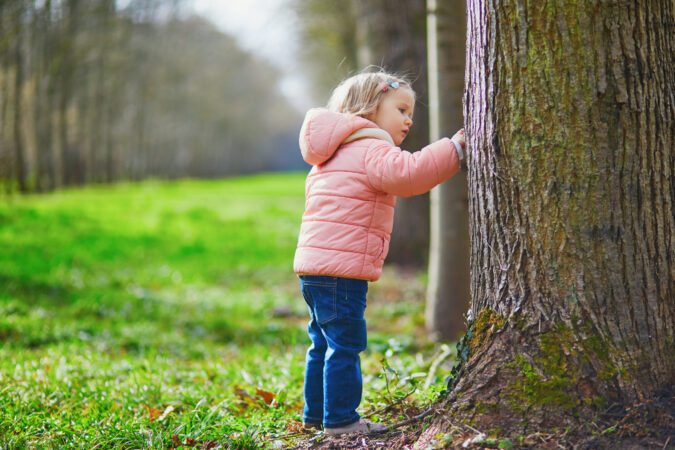In a short time, we will be welcoming spring. My colleague Jean Mendoza and I were reflecting that this would be a good time to involve young children in investigating the dramatic changes in the trees and bushes that they see nearby. Here are some of our suggestions for ways to get young children started on what could become a lifelong interest in things that grow around them.
Introducing the Topic
A helpful first step would be for you to inspect the trees around the school and to try to identify several of them—perhaps five or six different kinds. Ask your local librarian to help you locate field guides and relevant information books. Within a day or two, take the opportunity to talk to the children at group time about the different kinds of trees that they might see near the school. Tell them the names of the ones that you have seen nearby, and perhaps show them some of the leaves, cones, or seedpods that you might have picked up near the trees on a recent walk.
Share some informational (nonfiction) picture books about trees during story time.
Phase 1: Getting Started
Soon after introducing the topic, use the next possible opportunity to take the children for a walk to see the trees around the school. Let them know that because the season and the weather are about to change, the trees will look different in a few weeks.
Plan a special time for them to walk around the building and look at some of the trees that seem most interesting, perhaps suggesting a particular tree to each group of about five or six children. Equip each of the children with a clipboard, some drawing paper, and a pencil. Encourage them to try drawing some of the trees.
Engage the children in a discussion about what they already know about trees and what kinds of experiences they might have had involving trees. Invite them to do some drawing about their memories.
After returning to the class, have a follow-up discussion about what they saw and what they included in their drawings. Engage them in a discussion of other things that they could find out about the trees. List five or six of the trees that you have identified, and invite four or five children to sign up to investigate each of them, suggesting that they will be able to tell the story of the changes they will soon see. This way, there can be five or six groups responsible for regular observations of the detailed changes likely to occur over the next few weeks.
Invite the children to talk about (1) what they would like to find out about trees, (2) who they would like to talk to about what trees are like, (3) what kinds of care the trees need, and (4) what visits they think might help them find out more about how things grow and change with the seasons.
Suggest that they take their clipboards, paper, and pencils home to draw the trees and bushes around their homes.
Phase 2: Collecting Data
During the following weeks, the children can take time to visit the trees two or three times a week, with clipboards, paper, and pencils. During these field visits, each group can be encouraged
- to sketch their particular tree;
- to make note (as best they can) of the changes in the trees, such as changes in size of leaves, colors, appearance of seeds or buds or flowers, etc.;
- to make note of any insects, birds, or other animals that they might see and to draw them; and
- to use some string to measure the circumference of their tree’s trunk.
Encourage them to take notes about or to tell you of the scents and odors on or near their tree. They can also pay attention to the textures of the parts of the tree, including the bark and things that the tree drops around it.
Children can learn how to take photographs that will help them keep track of what is happening to their tree. They can take pictures of the same twig and branch of their tree every few days, as well as photos of the whole tree to help record changes that are visible from a distance.
On return to the classroom, each group can practice what to report to their classmates about their observations of their particular tree, with the help of the teacher if needed. The group reports can include their measures of the circumference of the tree trunks and other things that they have observed or collected on their particular tree or bush.
Take opportunities once or twice a week to ask the children to observe their trees and note the different rates at which they begin to blossom, their colors, and how long they last. Encourage them to notice that some trees have leaves and others have needles.
As opportunities arise, introduce relevant vocabulary to the children, such as blossoms, buds, compound leaves, deciduous and coniferous trees, and so forth.
At group times during this phase, the children are likely to have questions about the changes they have observed. Mention some ways that they might keep track of their questions. For example, they could make drawings or dictate their thoughts or questions to an adult.
In anticipation of a visit of an arborist or other tree specialist or local nursery staffperson, it’s a good idea to have the children rehearse their questions to be sure to make the best of the experts’ visits.
The Illinois Department of Natural Resources offers some materials that preschool and kindergarten teachers may be able to adapt. Their CD-ROM “Kids for Trees” and their collection of resources called “Illinois Tree Trunk” can help teachers and children find answers to many of their questions about trees.
Phase 3: Bringing the Project to a Close
After the full realization of spring, the children can be encouraged to plan the documentation of their findings by selecting drawings and photographs, organizing them carefully by the dates the drawings were made and the photographs were taken. The documentation and displays should tell the story of their work, their questions, the data they collected, and what they were able to find out from the investigation. The children may want to invite family members or other classes to view their display.

Lilian Katz
Lilian G. Katz, a professor emerita at the University of Illinois at Urbana-Champaign, has been an international leader in early childhood education. She has lectured in all 50 U.S. states and in 43 countries. Dr. Katz also has authored more than 150 publications about early childhood education, teacher education, child development, and parenting.
Biography current as of 2019
Web Resources
-
Kids for Trees
Source: Illinois Department of Natural Resources
This CD-ROM provides educational lessons about trees for young children.


